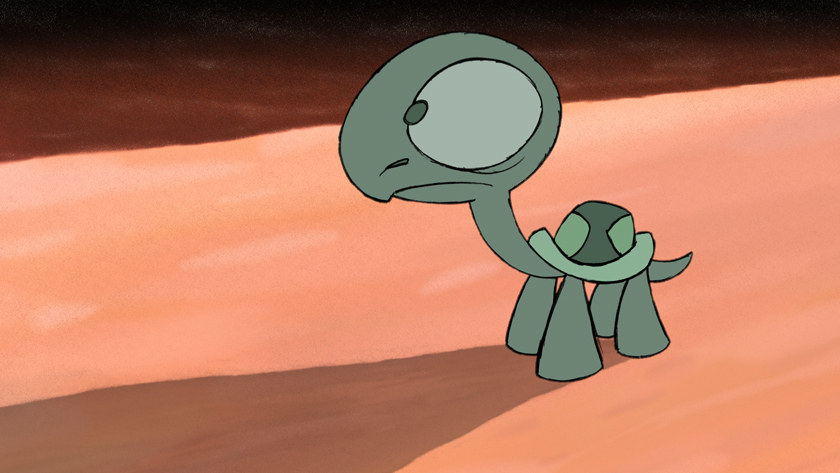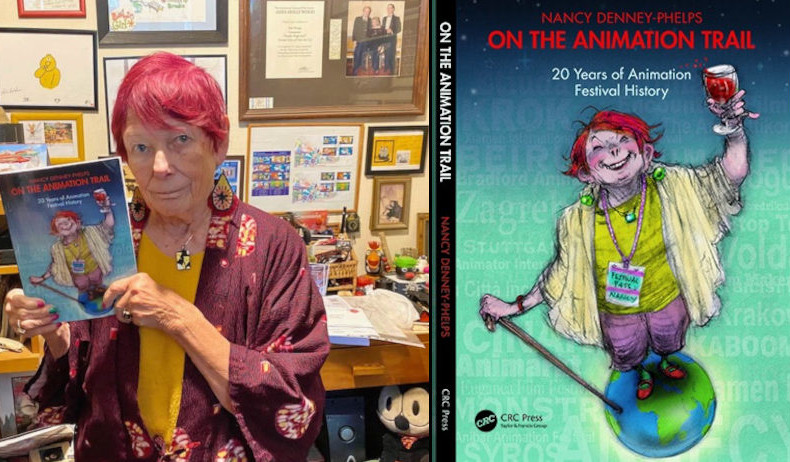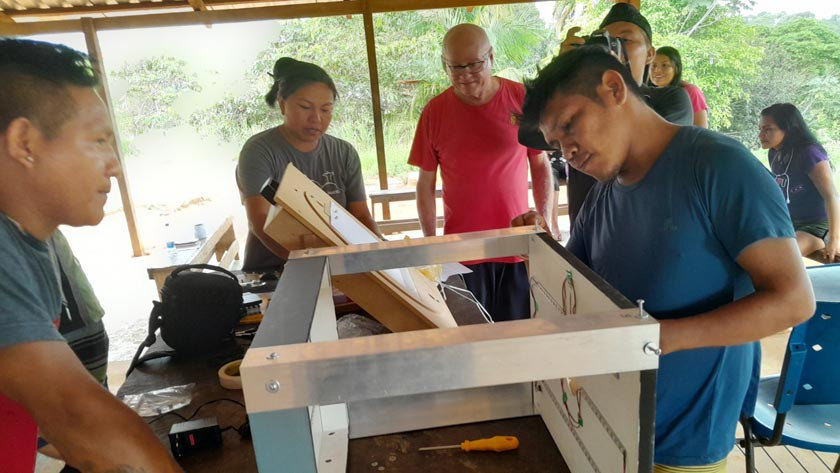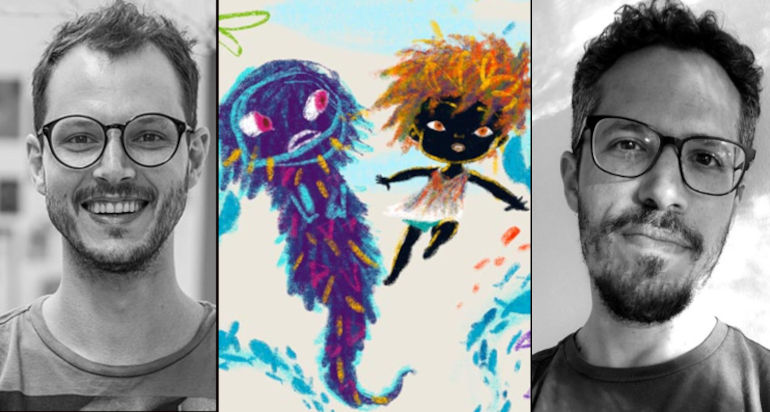(EXCLUSIVE): 'Bizarre Fish From the Abyssal Zone', But What Film is This Anyway? Trailer Premiere
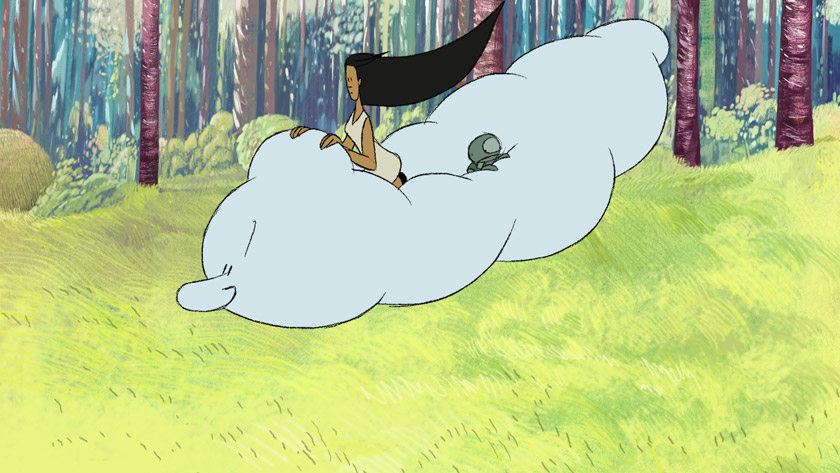
'Bizarre Fish From the Abyssal Zone' (Bizarros Peixes das Fossas Abissais) by the Brazilian animation filmmaker Marcelo Marão ' is one of those films with strange titles that does not clarify the motto of the narrative. This does not translate to whether it is a good film or not, but it already creates a curiosity: But what film is this anyway?
Well, this question does not have an easy or objective answer - as is expected in the films of Marcelo Marão, probably the most important Brazilian animator of his generation, who premiered his first feature film at the Monstra Festival 2023, and was awarded in the Perspectives Category.
Thus, I will contextualize and discuss the film in temporal, social, and aesthetic-narrative terms, with directors' excerpts (in quotes) added.
'Bizarre Fish' is "weird" in the very conception of its production. As Marão explains, "The film had no script, no storyboard, and was made in the order of the scenes. It was defined throughout its production". It's absurd to imagine considering it is a feature film production in animation. However, the director chose this working premise. He equipped himself with a small group of friends and already known work partners: "They were people I trust". And he transformed his apartment in Copacabana into an animation studio.
The film was financed by Ancine - National Cinema Agency (Brazil) in 2015 and took 7 years of production from the financing approval, and 10 years from its original conception and idea. Its total budget was R$2,000,000.00, less than 400.000.00€. This is unthinkable for an animated feature film production. But it was only possible and achievable due to the team's joint effort of 10 people and Marão's other strategy: "I paid people with dignity, even more than some Brazilian studios. We were just three people animating the entire feature, but accumulating the functions of storyboard decoupage, character design, in-between, and sometimes even the backgrounds".
It took a lot of work. And despite family illness issues, two years of the pandemic, and work partners moving abroad, the 'Bizarre Fish' got off the drawing board. Yes, it was mostly animated on paper: "I prefer paper. I'm used to it". The other part was digitally animated, with brushes that mimic a pencil stroke. The entire film was digitally painted and edited.
We can consider that 'Bizarre Fish' had an experimental production, as it deviates from all the parameters and production models considered viable for a feature film. And not to mention the narrative, far from being an animation for children (and a very underdeveloped trend in Brazil).
The official synopsis of the film does not enlighten us about the story, which only begins to be understood towards the end of the film's first third (no spoilers ahead).
A woman with bizarre superpowers, a turtle with obsessive-compulsive disorder, and a cloud with urinary incontinence on an unusual journey to the ocean's depths- Film Synopsis.
Oddly enough, that's what the story presents, but it's not what it's about: a woman ("the adult") with a butt that turns into a gorilla (who manages to eat two thousand square meters of grass to prevent a city from being destroyed). She befriends a small turtle ("the father") who has OCD and a cloud ("the child") with a platonic crush on the woman, and who cannot control his power to do to rain. Marão explains: "Conceptually, it is a road movie with the simple and basic structure of Joseph Campbell's hero's journey so I could have fun with countless nonsense situations where I could animate crazy and hallucinatory scenes".
This unusual group continues its journey from Rio de Janeiro and Nilópolis (Marão's birthplace) through the State of São Paulo (Brazil) countryside to the depths of the abyssal trenches, searching for a plant. On this journey, they fight against extraterrestrial rhinoceros and fish monsters that try to stop their quest.
Watch the 'Bizarre Fish From the Abyssal Zone' trailer:
At certain moments the film recalls the surrealism of Estonian films; when, for example, the pores of the heroine's skin turn into a thousand cows. Or because part of the story takes place in a castle in Serbia -which, let's face it, is strange for a Brazilian production. Yet in this way, the director manages to keep the public's attention through this unusual narrative, which in the end reveals the relationships between the 'loose" scenes of the film. Clarifying itself to the public as an emotional film shows the importance of memories and personal relationships.
And why 'Bizarre Fish From the Abyssal Zone'? "I had a lot of references to these animals, which I like and watched on television", explained Marão. The "abyssal" itself has a connection with relationships, as the director observes. "While it's neither obvious nor explicit, every scene in the film quotes, speaks, exposes everything that happened in my life, and depicts family, personal and professional moments - even if to those watching, it just looks like a deep sea fish fighting."
And in my view of the film, the abyssal refers to oblivion, the unknown future, and life's difficulties. As every work reflects from where it originated, I cannot ignore the "bizarre" moment, socio-politically speaking, of Brazilian society - after four years of mismanagement and genocidal policies, the bizarre fishes came to light.
What is admirable about this film is that it fully respects animation, as an animated technique and expression, both in form and content: It is implausible, absurd, impossible, and seductive. Without ceasing to be a means of ludic artistic expression, for messages that do not have always a "happy end".
It is a graphically and narratively unusual film, crazy but emotional. The drawing is the body base of the animation, where these were not wholly "cleaned": "I like the scratches and marks of the drawing". This allows you to still see your scratches as roughs, creating a different movement of the characters, like small stroboscopic shadows, which is very interesting.
The use of color throughout the narrative informs us about the state of mind of the main character (The woman) or the director himself concerning the environment and his memories, or the context of the scene. These are presented as images only in black traces, then monochromatic, and later, fully colored. For example, Marão portrays the city of Nilópolis and his father's Haberdashery, where he spent most of his childhood: "When I showed the film to my family, everyone cried". Marão is a self-centered filmmaker, and 'Bizarre Fish' does not escape his universe, but where colors play a substantial symbolic role and set the tone of each scene for the audience.
The soundtrack is a highlight in itself, being made and performed made-to-measure, with extreme care, and is beautiful. Ranging from action scenes and suspense in the abyssal trenches to the emotional encounter between granddaughter and grandfather. "Students and teachers from the Tatuí Music School (in the São Paulo countryside) recorded the track in a small studio, where each instrument alternated individually". Each instrument was individually recorded and then "doubled" to create the sound of a larger orchestra.
The voice actor Guilherme Brigs and the Brazilian actors Natália Lage and Rodrigo Santoro (Tulio Monteiro, in 'Rio 1' and 'Rio 2'), provided the characters' voices.
Without a doubt, it is possible for those who know the director's history to enjoy what is happening on screen in another way. However, the public does not miss the comedy, the nonsense, or the emotionality of the narrative of this film, which strongly deviates from the standards of the market.
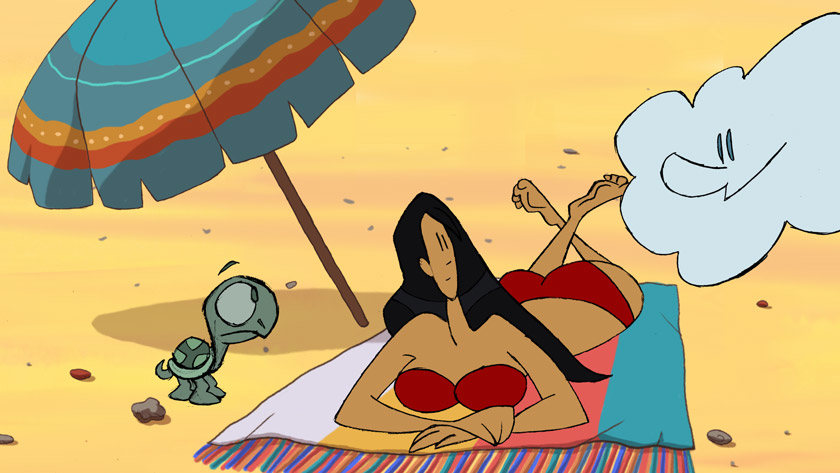
Bizarre Fish From the Abysmal Zone

Marcelo Marão

Marcelo Marão & Eliane Gordeeff @ Monstra Festival 2023
About Marcelo Marão
Marão graduated from the School of Fine Arts of the Federal University of Rio de Janeiro. He is an animation director, making fourteen short films ('I Wish I Were A Monster', 'Engolervilha', 'The Dwarf Who Became A Giant', 'Sheeliton', among others) and has participated in over three hundred animations for advertising, the internet, TV, and cinema.
He was the President-founder of ABCA (Brazilian Association of Animation Cinema) and a professor of animation at Catholic University (PUC-Rio) for seven years. He is the 'International Day of Animation' coordinator (in Brazil) and managing partner of Marão Desenhos Animados. His short films have been screened at over 600 festivals in over forty countries and have received 123 awards. Marão was honored at the 20th Anima Mundi and received retrospectives at several festivals such as Animanima (Serbia) and ReAnimania (Armenia).
Credits:
Bizarre Fish From the Abyssal Zone' (75', 2023)
Script and Direction: Marão | Production: Letícia Friedrich and Marão | Animation: Marão, Rosaria and Fernando Miller | Soundtrack: Duda Larson | Art Direction: Marão | Editing and Composition: Alessandro Monnerat and Yohana Lazarova | Digital Painting: Silvana Andrade | Sound design: Ana Luiza Pereira | Voices: Natália Lage, Guilherme Briggs and Rodrigo Santoro
Eliane Gordeeff talked to Marcelo Marão on March 23rd during Monstra, Lisbon Animation Festival, from 15th to 26th March 2023 in Portugal.
contributed by: Eliane Gordeeff


